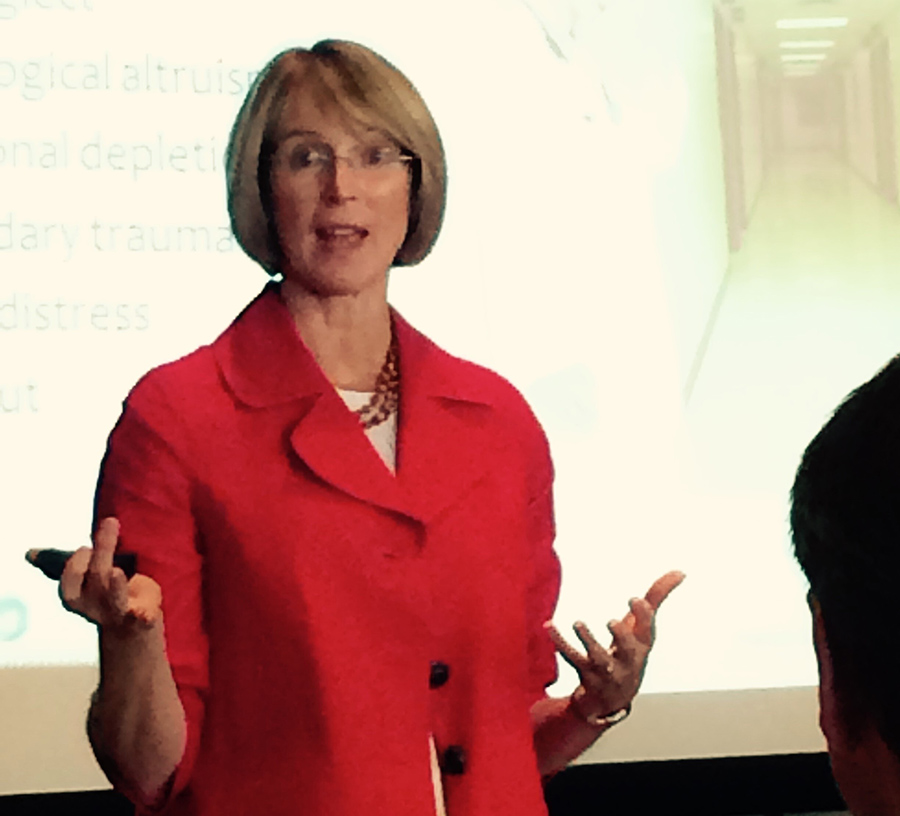When Vice President Kamala Harris praised President Joe Biden’s empathy as an early trademark of his presidency, it signaled that empathy is becoming a social movement. That’s true in health care as well.
“Empathy is a really big idea right now and I can tell you people from many industries — police forces, educators, veterinarians and others — are inquiring about empathy training,” said Helen Riess, MD, Co-Founder and Chief Scientist, Empathetics, which provides empathy and interpersonal skills training for medical professionals. “It’s really kind of exploding. The whole world is crying out for a more compassionate health care system.”
Catalyst described empathy as “a superpower in the future of work,” in an October 2020 report, while Google Chief Innovation Evangelist, Frederik Pferdt said: “empathy is the skill of the future.”
“Practicing empathy every day as a business leader helps you understand what your employees need and what your immediate team actually needs right now,” Pferdt added, according to a late January article. “Putting yourself into their situation, to really understand how they think and feel, helps you come up with better solutions for your employees.”
Yet, “empathy is an underutilized differentiator,” according to Adobe’s 2021 Digital Trends report. “Understanding how people feel is an essential, but often an overlooked part of the experience,” Adode explained. “Analyzing and anticipating their reactions at decision points and during moments of friction will make the process work better for both sides.”
Health Evolution announces Confab 2022
While Adobe and Google are focused on empathy among leadership ranks with a particular focus on advancing innovation, those are not the only realms where empathy is gaining traction. Sutter Health, for example, used empathy training, which has been shown in randomized controlled trials at Harvard, as a pilot to improve patient experience in Gould Medical Group, according to P. Adam Dodd, MD, Medical Director of Patient Experience and Co-Chair of the Department of Obstetrics and Gynecology.
“Our target was to take middle-of-the-road providers, those earning satisfaction scores in the 50th percentile, and raise them to the 75th percentile,” Dodd said.
In the pilot, the OB/GYN department increased its ‘Would you Recommend the Practice’ score from 88.2 percent to 90.4 percent and achieved a 90-day 91st percentile rate with 62 percent of clinicians above the 50th percentile. The metric “Provider spends enough time with patient,” rose from 90.8 precent to 92.5 percent and the “Clerk/Receptionist Staff helpful” measure improved from 79.8 percent to 83.6 percent.
“Patient experience is not linear and therefore you really want to move people as close as you can to become apostles on a mission saying how great the experience you deliver is,” Dodd said. “Whatever you’re selling, serving or doing, you want people to speak highly of that.”
Rocio Huerta-Camara, Manager of Community Health at Sutter Gould Medical Foundation said the pilot’s success also goes beyond the improvement in patient satisfaction scores.
“The financial piece of this experience work translates to our patients and providers. If you take care of your people, teach them empathy for self, it will translate to our business because our patients will keep coming back,” Huerta-Camara said. “That equals loyal patients and that’s why we do it.”











